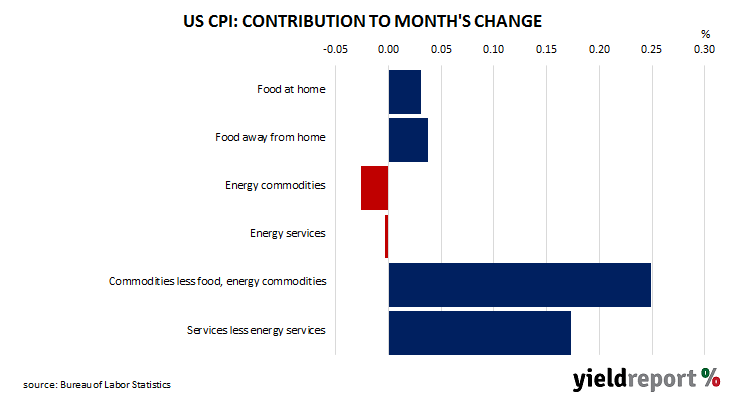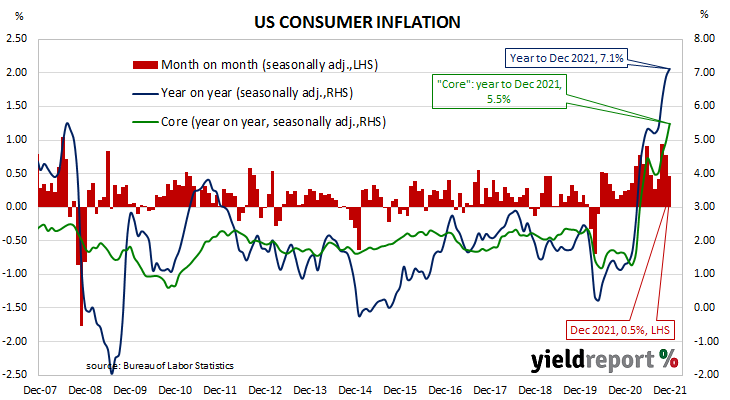Summary: US CPI increases by 0.5% in December, above expectations; “core” rate up 0.6%, as above expected figure; “no evidence inflation pressures abating”; US inflation yet to peak as labour market tightens further, wage pressures grow; non-energy commodities, rents main drivers of headline rise.
The annual rate of US inflation as measured by changes in the consumer price index (CPI) halved from nearly 3% in the period from July 2018 to February 2019. It then fluctuated in a range from 1.5% to 2.0% through 2019 before rising above 2.0% in the final months of that year. Substantially lower rates were reported from March 2020 to May 2020 and they remained below 2% until March this year. Rates has risen significantly since then.
The latest CPI figures released by the Bureau of Labor Statistics indicated seasonally-adjusted consumer prices increased by 0.5% on average in December. The result was above 0.1 percentage points above the consensus expectation but lower than November’s 0.8% rise. On a 12-month basis, the inflation rate accelerated from November’s seasonally adjusted reading of 6.9% to 7.1%.
“Headline” inflation is known to be volatile and so references are often made to “core” inflation for analytical purposes. Core inflation, a measure of inflation which strips out the more variable food and energy components of the index, increased by 0.6% on a seasonally-adjusted basis for the month. As with the headline result, the rise was 0.1 percentage points above the consensus expectation and November’s 0.5% increase. The annual growth rate increased from 5.0% to 5.5%.
“There is no evidence that inflation pressures are abating. Energy prices declined slightly in December but pressures have broadened significantly beyond this, with core goods and services prices all surging,” said ANZ economist John Bromhead.
US Treasury bond yields barely moved on the day. By the close of business, the 2-year Treasury yield had inched up 1bp to 0.91%, the 10-year yield had returned to its starting point at 1.74% while the 30-year yield finished 1bp higher at 2.08%.
In terms of US Fed policy, expectations of any change in the federal funds range over the next 12 months softened slightly. January 2023 futures contracts implied an effective federal funds rate of 0.965%, nearly 90bps above the spot rate but just 0.5bps higher than at the end of the previous day.
Bromhead thinks US inflation is yet to peak as “pressures are likely to intensify as the labour market tightens further and wage pressures grow.” He expects US inflation to remain “in a 7.0%-8.0% range for quite a few months to come.”
The largest influence on headline results is often the change in fuel prices. “Energy commodities”, the segment which contains vehicle fuels, declined by 0.6%, subtracting 0.03 percentage points. However, prices of commodities excluding food and energy had the largest effect in December, adding 0.25 percentage points after they increased by 1.2% on average. Non-energy services, the segment which includes actual and implied rents, also had a significant impact after prices rose by 0.3% on average over the month.



